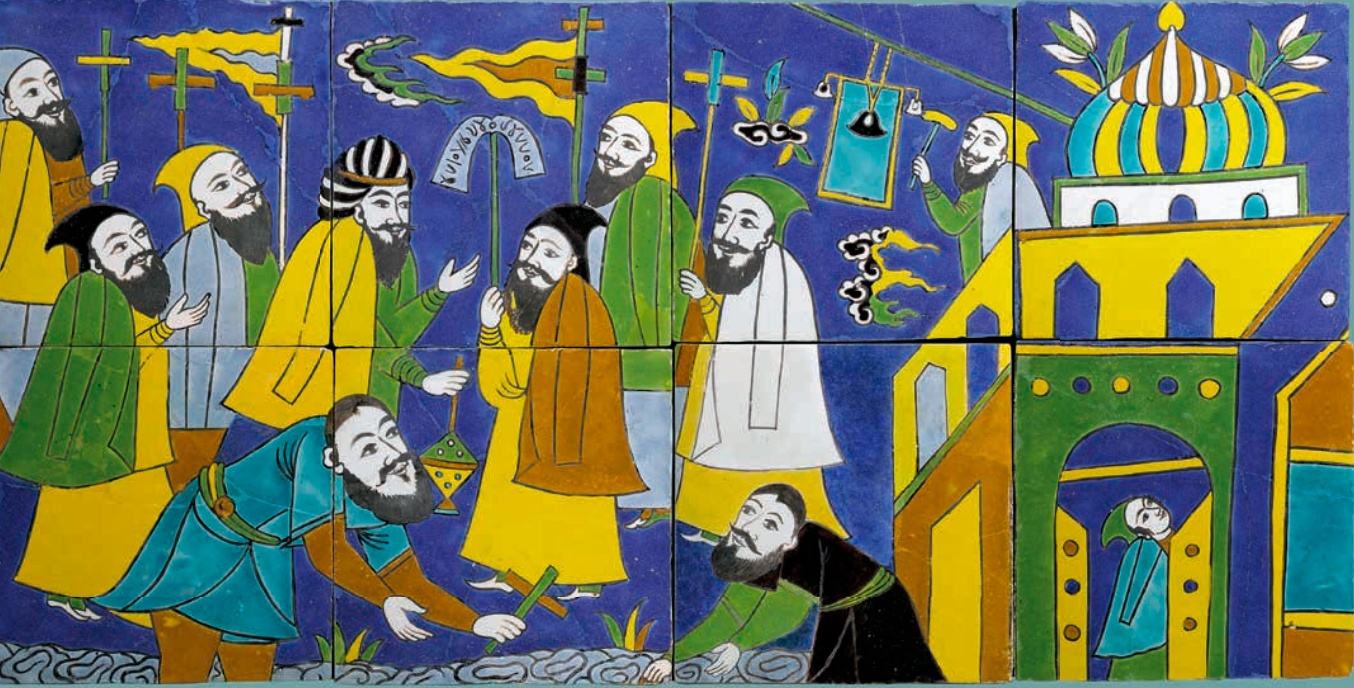
Chen Hongshou (1598-1652), courtesy name Zhanghou, nicknamed Laolian, was a native of Zhuji, Shaoxing Prefecture, Zhejiang Province in the Ming Dynasty. Mr. Lu Xun loves his figure prints, saying that "Lao Lian's painting is a masterpiece of a generation", which has a great influence on Japanese Ukiyo-e and modern figure paintings.
2022 marks the 370th anniversary of Chen Hongshou's death. The Paper has learned that "Gao Gu Qihao - Chen Hongshou's Painting and Calligraphy Exhibition" will be held at the Xuwei Art Museum (Shaoxing Museum Branch) on September 28. On the basis of the collection resources of Shaoxing Museum, this exhibition has been borrowed from 35 cultural and museum units and ancient book collection units, including the Palace Museum, National Museum of China, National Art Museum of China, Shanghai Museum, Nanjing Museum, and Liaoning Provincial Museum, and exhibited Chen Hongshou's calligraphy and painting works. , literature manuscripts, and their teachers and friends, post-study calligraphy and painting, ancient books, etc., a total of 100 pieces (groups).

Poster
According to the person in charge of the Shaoxing Museum, this is another cultural event jointly held by Shaoxing and 35 domestic cultural and expo units after the "Deranged Ivy - Xu Wei's Painting and Calligraphy Exhibition". The exhibition focuses on Chen Hongshou's figure paintings, and also selects his works of different periods and different themes, as well as his cultural background and inheritance from teachers and friends. It is hoped that when the audience appreciates Chen Hongshou's "high ancient and strange" works, they can also comprehend from the depth of history Behind his painting style is the artistic spirit of tracing the origin, making a new appearance, and promoting individuality.
Chen Hongshou (1599-1652), courtesy name Zhanghou, nicknamed Laolian, nicknamed Laochi, was a monk for a short time in the late Ming and early Qing dynasties, calling himself a "repentant monk". Zhejiang Zhuji people. He suffered from unfortunate circumstances in his life, which caused great pain and contradiction in his heart and mind. After the fall of Ming Dynasty, Lao Lian missed her motherland and was depressed, sometimes swallowing and crying, sometimes drinking and shouting wildly.
Chen Hongshou was a young teacher under Liu Zongzhou and a supplementary student. He failed the hometown exam and was summoned to the inner court to worship during the Chongzhen period. In the Ming Dynasty, he entered Yunmen Temple as a monk, and then returned to the secular world. He sold paintings for a living. The cause of death is different.
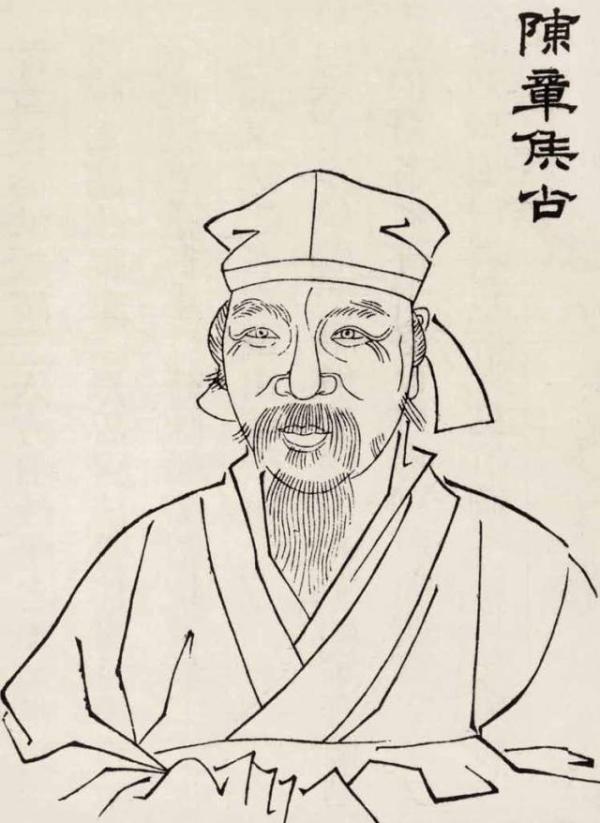
Portrait of Chen Hongshou in "Three Immortals Praises" by Zhang Dai, a friend of Chen Hongshou in Ming Dynasty
Chen Hongshou was known for his paintings all his life, especially in portraiture. The torsos of the figures are sturdy, and the lines of the clothes are thin and round. In their later years, the images are exaggerated, or abnormal and strange, and their characters are outstanding. Flowers and birds are finely depicted, with beautiful colors and rich decorative flavors. Can also draw ink and wash freehand flowers, hearty. He is also good at creating illustrations for literary works, which can show the spiritual temperament of the original characters. His painting techniques are concise, the colors are calm and reserved, and the style is high and ancient. His achievements in figure painting are said to be "powerful, arrogant and upright, above Chou (Ying) and Tang (Yin), and there is no such brush and ink for three hundred years"; contemporary international scholars respect him as "representing the seventeenth century". The first of many artists with a thoroughly personal style."
The Ming Dynasty to the early Qing Dynasty was the golden age of Chinese printmaking, especially Xiao Yuncong and Chen Hongshou, two masters who presided over the painting circle. Xiao's handed down woodblock prints are preferably landscapes, while Chen Hongshou dominates the figure painting world.
Manuscripts of prints made by Chen Hongshou are mainly used for book illustration and making playing cards (leaves). The famous ones include "Nine Songs" and "Qu Zixing Yin" twelve, "Water Margin Leaves" forty, "Zhang Shenzhi Due North West" There are six pieces of "The Chamber", four pieces of "The Story of Jiaohong in the Yuanyang Tomb", and forty-eight pieces of "Bogu Leaves" made a year before his death. In 1638, when Lai Qinzhi's "Chu Ci Shu Zhu" was published, Chen Hongshou's "Nine Songs" was used as an illustration and put into woodcut, which had a great influence. The image of Qu Yuan he created has been surpassed by no one in the Qing Dynasty for more than two centuries, and is regarded as a classic work of Qu Yuan.
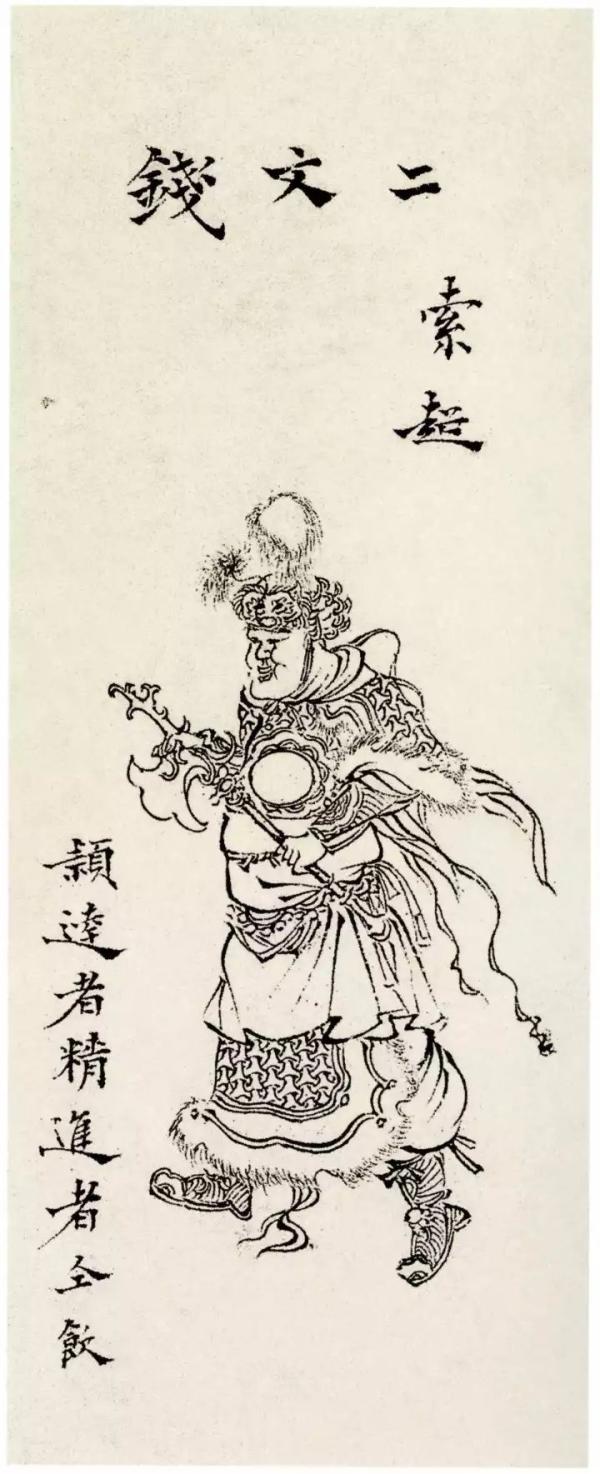
Chen Hongshou, "Water Margin Leaves", 1616, Collection of Stone Bookstore, Taiwan Not part of this exhibit
Looking at Chen Hongshou's achievements in figure painting, in his prime, he has changed from "god" to "transformation", and in his later years, he has become more proficient and has reached the realm of transformation. The shape is grotesque and deformed, and the lines are clear, round and fine, and they are scattered and scattered, and they are continuously refined in the "chemical" environment. Until modern times, Chen Hongshou's works were highly praised by Lu Xun. Lu Xun started collecting Chen Hongshou's works as early as his prime, and he was preparing to introduce his prints in his later years. All of this shows that Chen Hongshou is a brilliant and great painter in the history of Chinese art.
According to the introduction of relevant ancient calligraphy and painting researchers to The Paper, after the fall of Ming Dynasty, Chen Hongshou became a monk, and later sold paintings in Hangzhou, and passed away after more than 50 years. He was at the turn of the Ming and Qing Dynasties, and when he was young and middle-aged, he experienced great changes in the current situation. There was a trend of "mountains and rains are coming and the wind is full of buildings." The attitude of influence and coping has affected his artistic creation and the formation of his artistic style to a certain extent. "Many teachers and friends around him have made personal choices in the great changes of the times, some resolutely resisted the Qing Dynasty, some They attached great importance to integrity and would rather starve to death, these figures were all elites in the field of culture and art at that time.”

Guanyin figure on silk, 82 cm long, 24.3 cm horizontal, in the collection of the Palace Museum
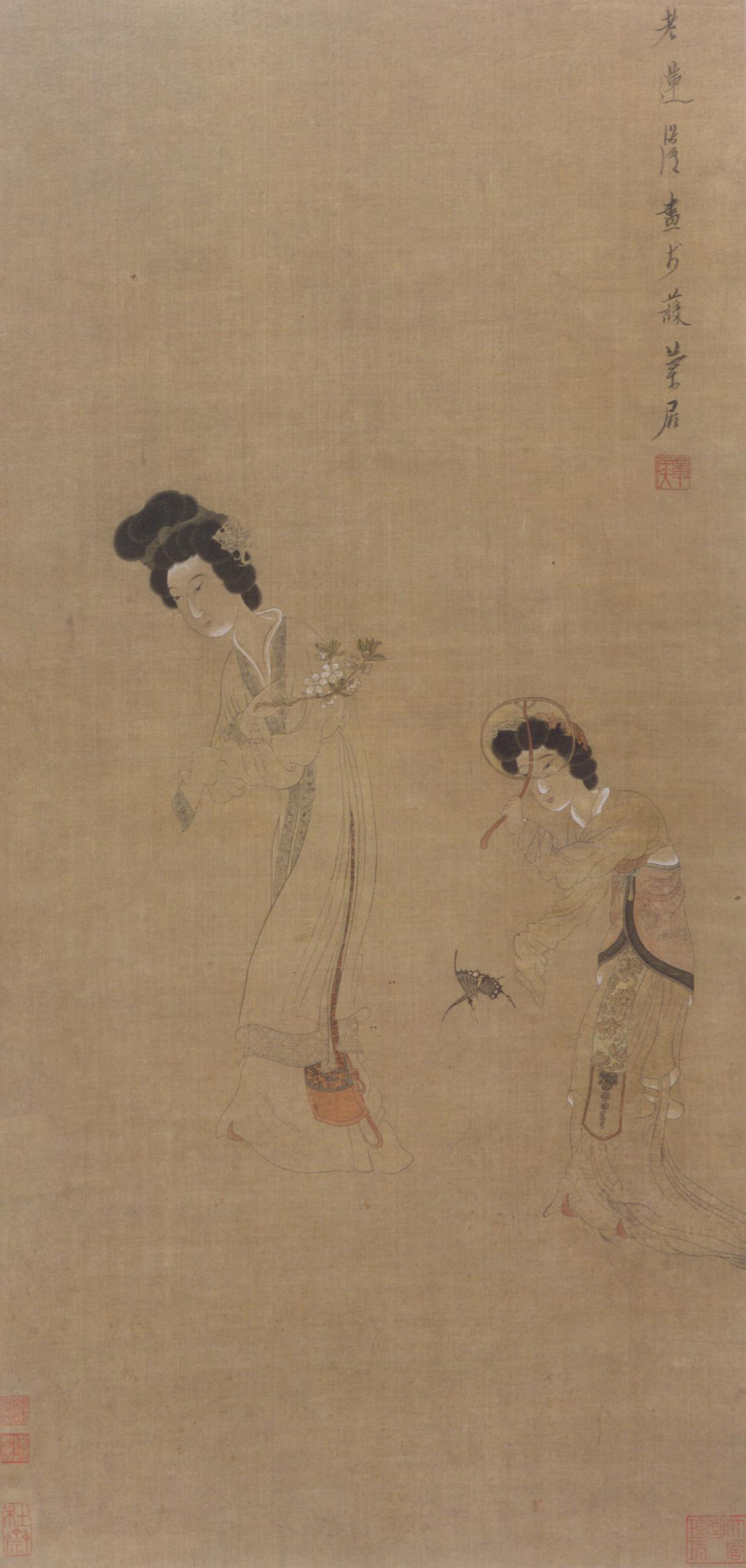
Scroll of Lady Fluttering Butterfly, on silk, 93.7 cm in length, 45.7 cm in width, in the collection of Shanghai Museum

The right army cage goose scroll, silk, vertical 109 cm, horizontal 50.5 cm, Guangdong Provincial Museum
2022 marks the 370th anniversary of Chen Hongshou's death. In order to carry forward the excellent traditional Chinese culture, show the profound humanistic heritage of Shaoxing, and enhance the recognition of Shaoxing as a famous historical and cultural city and a cultural capital of East Asia, the Shaoxing Municipal Committee of the Communist Party of China and the Shaoxing Municipal People's Government decided to hold the "Gao Gu Qi Hao - Chen Hongshou's Painting and Calligraphy Exhibition".
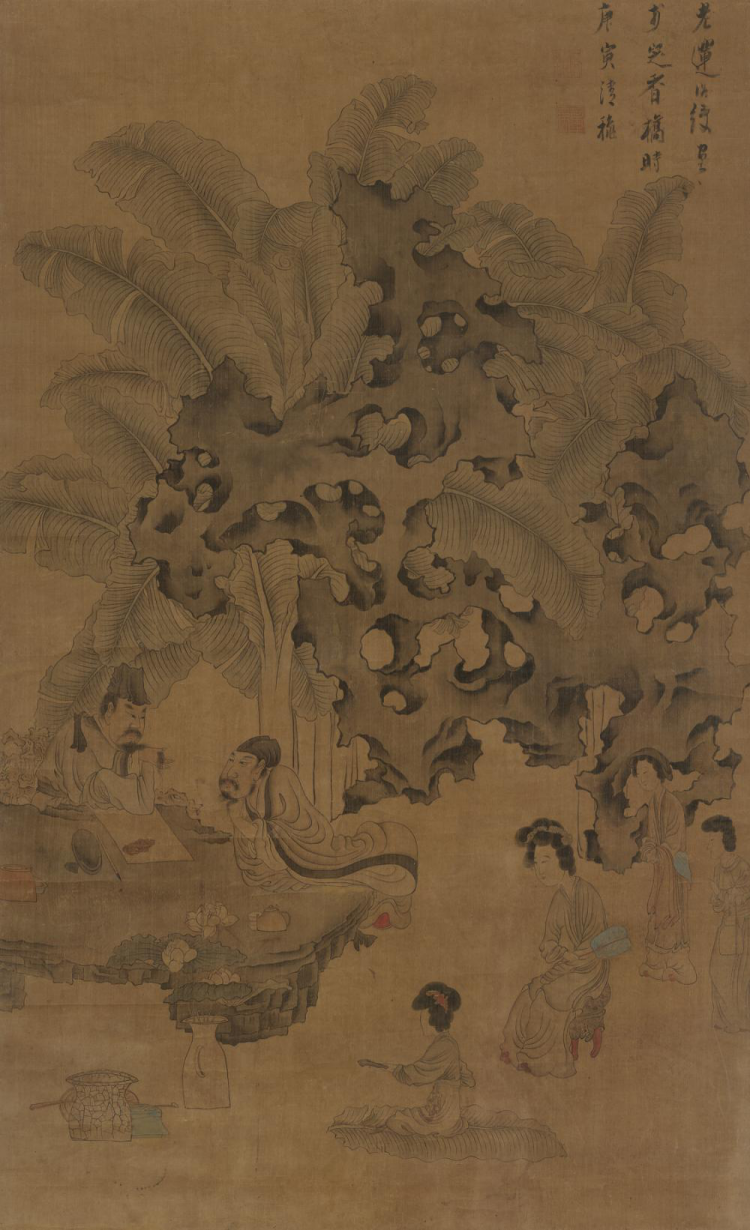
Banana-shaded silk-bamboo scroll on silk, 154.5 cm in length, 94 cm in width, in the collection of Shaoxing Museum
It is reported that the exhibition has been supported by the Palace Museum, National Museum of China, National Library of China, National Art Museum of China, Shanghai Museum, Nanjing Museum, Liaoning Provincial Museum, Capital Museum, Tianjin Museum, Guangdong Provincial Museum, Anhui Museum, Shandong Museum, Jilin Museum Provincial Museum, Sichuan Museum, Fujian Museum, Guangxi Zhuang Autonomous Region Museum, Zhejiang Provincial Museum, Zhejiang Library, Suzhou Museum, Shenyang Palace Museum, Palace Museum Press, Shenzhen Museum, Wuxi Museum, Yangzhou Museum, Hangzhou Museum, Wuhan Museum, Ningbo City Supported by Tianyi Pavilion Museum, Tsinghua University Art Museum, China Academy of Art, Hangzhou Cultural Heritage and Historic Building Protection Center, Xiaoshan Museum, Juntao Art Institute, Shaoxing Library, Jiashan County Museum, Zhuji City Museum, Shangyu District Library .
The exhibition will run until December 20.
Attachment: Exhibit Catalog

(This article is based on the relevant information released by Shaoxing Museum, Shaoxing Cultural Tourism and surging news materials.)
